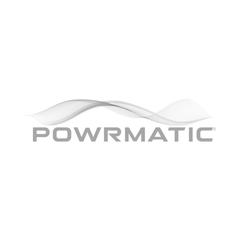Shop All
- £188.57 excl. VATUnit price excl. VAT /Unavailable
AUMULLER FTA600 Roller R Bracket
£124.64 excl. VATUnit price excl. VAT /UnavailableAUMULLER FTA600 Slider Drive GF Model
£1,526.98 excl. VATUnit price excl. VAT /UnavailableAUMULLER FTA600 Roller Drive R Model
£1,399.11 excl. VATUnit price excl. VAT /UnavailableActulux Bracket set for HCV Door Drive - Inwards opening 390061
£96.66 excl. VATUnit price excl. VAT /UnavailableActulux Bracket set for HCV Door Drive - Outward opening (flush door)
£49.64 excl. VATUnit price excl. VAT /UnavailableActulux HCV Door Drive 90° 500N/600mm - 24VDC (1.4A) 318062 SLIDER DRIVE
£541.69 excl. VATUnit price excl. VAT /UnavailableActulux HCV Door Drive 90° 500N/600mm - 24VDC (1.4A) 318061 ROLLER DRIVE
£510.30 excl. VATUnit price excl. VAT /UnavailableD+H DDS 54 Door Opener Drives, 24v, 500mm, 500N
£684.62 excl. VATUnit price excl. VAT /Unavailable
Brands
More about Door Drives
General Information
General Information
Automatic door drives are essential for
modern buildings, providing convenient, accessible, and efficient movement of
people and goods. In the UK, their specification and installation must comply
with relevant British Standards and Building Regulations covering safety,
accessibility, energy efficiency, and fire protection. They are widely used in
commercial, healthcare, retail, education, and transport facilities to improve
access and user experience.
How Door Drives Work
A door drive powers the opening and closing
of automatic doors. Depending on the application, these can be sliding, swing,
or revolving mechanisms. Modern systems incorporate sensors, safety devices,
and control panels to ensure smooth, safe, and efficient operation. They may
also integrate with building management systems, fire alarms, and access
control systems.
Benefits of Automatic Door Drives
✔ Accessibility – Supports compliance with
the Equality Act 2010 and Part M of the Building Regulations.
✔ Safety – Complies with BS EN 16005 for
safe operation of power-operated pedestrian doorsets.
✔ Energy Efficiency – Minimises air leakage
and supports Part L of the Building Regulations.
✔ Hygiene – Touchless entry reduces
infection risk in healthcare and public buildings.
✔ Convenience – Enables smooth flow of
people in busy environments such as retail and transport hubs.
✔ Integration – Can be connected to fire
alarms, access control, and building management systems.
Applications of Door Drives
• Retail – Provides safe and accessible
entry for customers while supporting energy efficiency.
• Healthcare – Ensures hands-free, hygienic
access to wards, theatres, and cleanrooms.
• Education – Offers safe and easy access
for pupils, staff, and visitors.
• Offices – Integrates with access control
systems for security and efficiency.
• Transport – Handles high volumes of
passengers safely and efficiently.
Choosing the Right Door Drive
Selection depends on building type, user
needs, and compliance requirements. Consider: door type (sliding, swing,
revolving), traffic levels, accessibility requirements, integration with safety
systems, and energy performance. Always ensure compliance with BS EN 16005 and
related standards.
Maintenance Requirements
Regular maintenance is essential to ensure
safety and reliability. UK Health & Safety Executive (HSE) guidance
requires powered doors to be regularly inspected and maintained under PUWER
(Provision and Use of Work Equipment Regulations). BS EN 16005 also requires
documented safety checks. Maintenance should include inspection of sensors,
safety devices, and drive mechanisms.
Frequently Asked Questions
Do automatic door drives comply with UK safety standards?
Do automatic door drives comply with UK safety standards?
Yes. All installations must comply with BS EN 16005 and Building Regulations Part M for accessibility.
Are door drives required for accessibility compliance?
Are door drives required for accessibility compliance?
In many public buildings, powered entrances are required under the Equality Act 2010 to ensure equal access.
What is the difference between BS EN 16005 and BS 7036?
What is the difference between BS EN 16005 and BS 7036?
BS EN 16005 is the current standard for powered pedestrian doorsets, while BS 7036 has been largely replaced but is still cited in UK practice.
Can door drives be linked to fire safety systems?
Can door drives be linked to fire safety systems?
Yes. In escape routes or smoke lobbies, drives must comply with Approved Document B and BS EN 16361, and integrate with fire alarms.
Other standards may be applicable and professional advice should be sought to check which design standards must also be met when linking with fire safety or life safety systems
How energy efficient are automatic doors?
How energy efficient are automatic doors?
Modern drives support compliance with Part L by minimising air leakage and improving energy performance.
Are there hygiene benefits for healthcare settings?
Are there hygiene benefits for healthcare settings?
Yes. Touchless doors reduce infection risk and are recommended in NHS guidance for critical areas.
What is the typical lifespan of a door drive?
What is the typical lifespan of a door drive?
With regular servicing, door drives can last 10–15 years or more.
Do I need a risk assessment before installing door drives?
Do I need a risk assessment before installing door drives?
Yes. Installers must complete a risk assessment in line with HSE PUWER regulations and BS EN 16005 safety requirements.
What maintenance is required?
What maintenance is required?
Regular inspections of sensors, safety devices, and mechanisms are required, typically every 6–12 months.
Can automatic doors be retrofitted?
Can automatic doors be retrofitted?
Yes. Many door drive systems can be retrofitted to existing doors to provide automation while meeting compliance requirements.
Inbuild UK provides a range of door drives that comply with UK standards and regulations. Our solutions ensure safety, accessibility, energy efficiency, and long-term reliability for all building types.



















